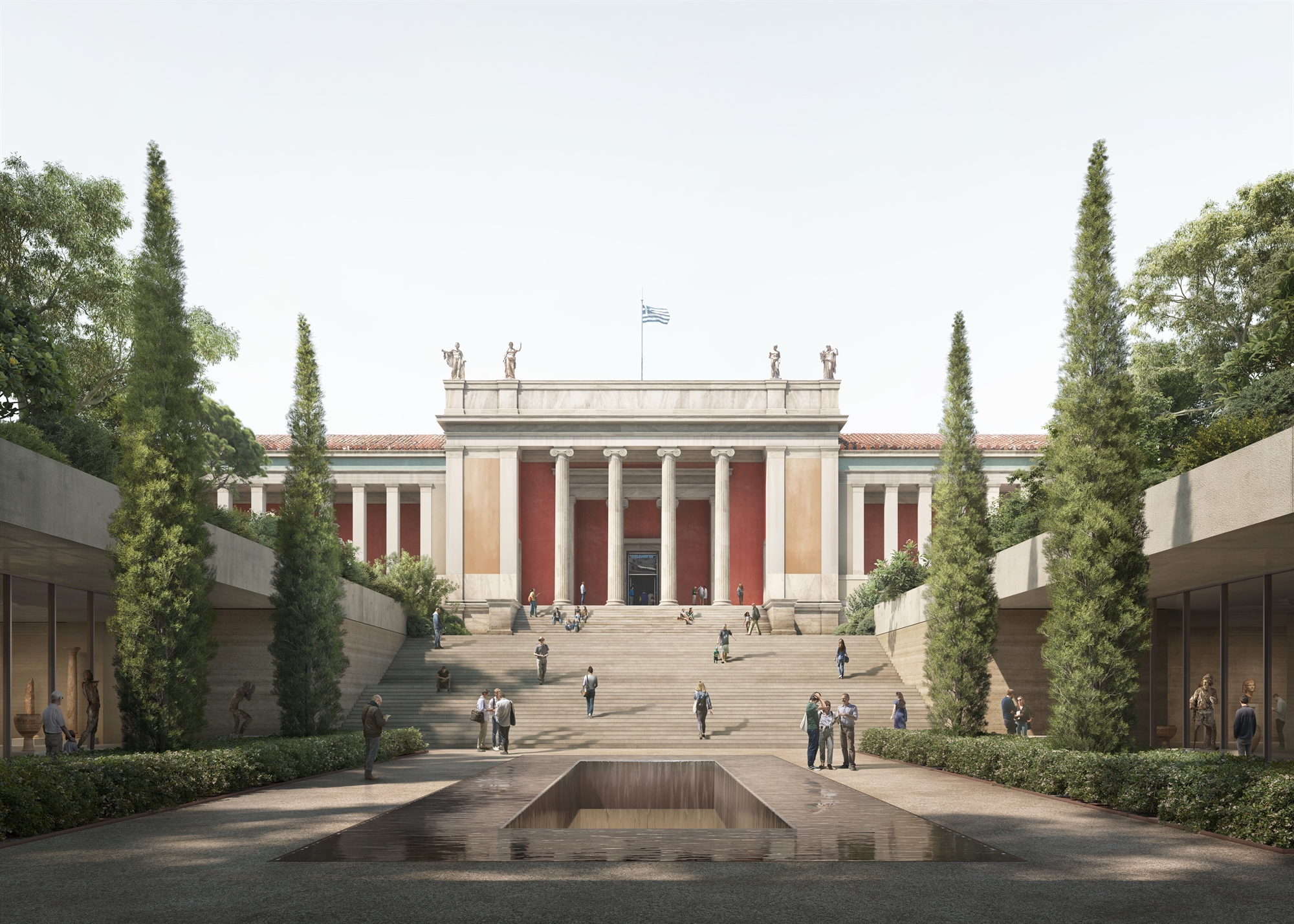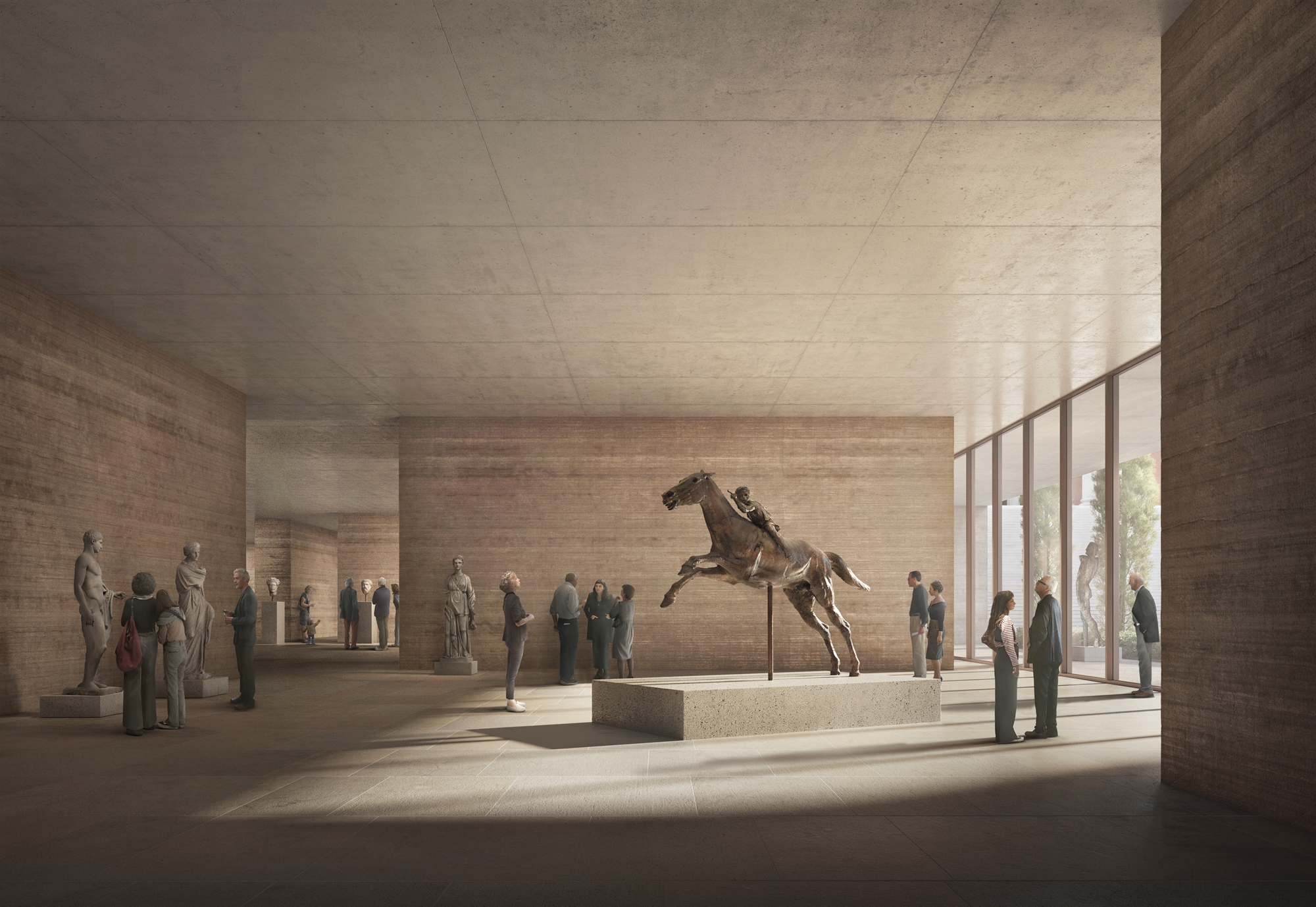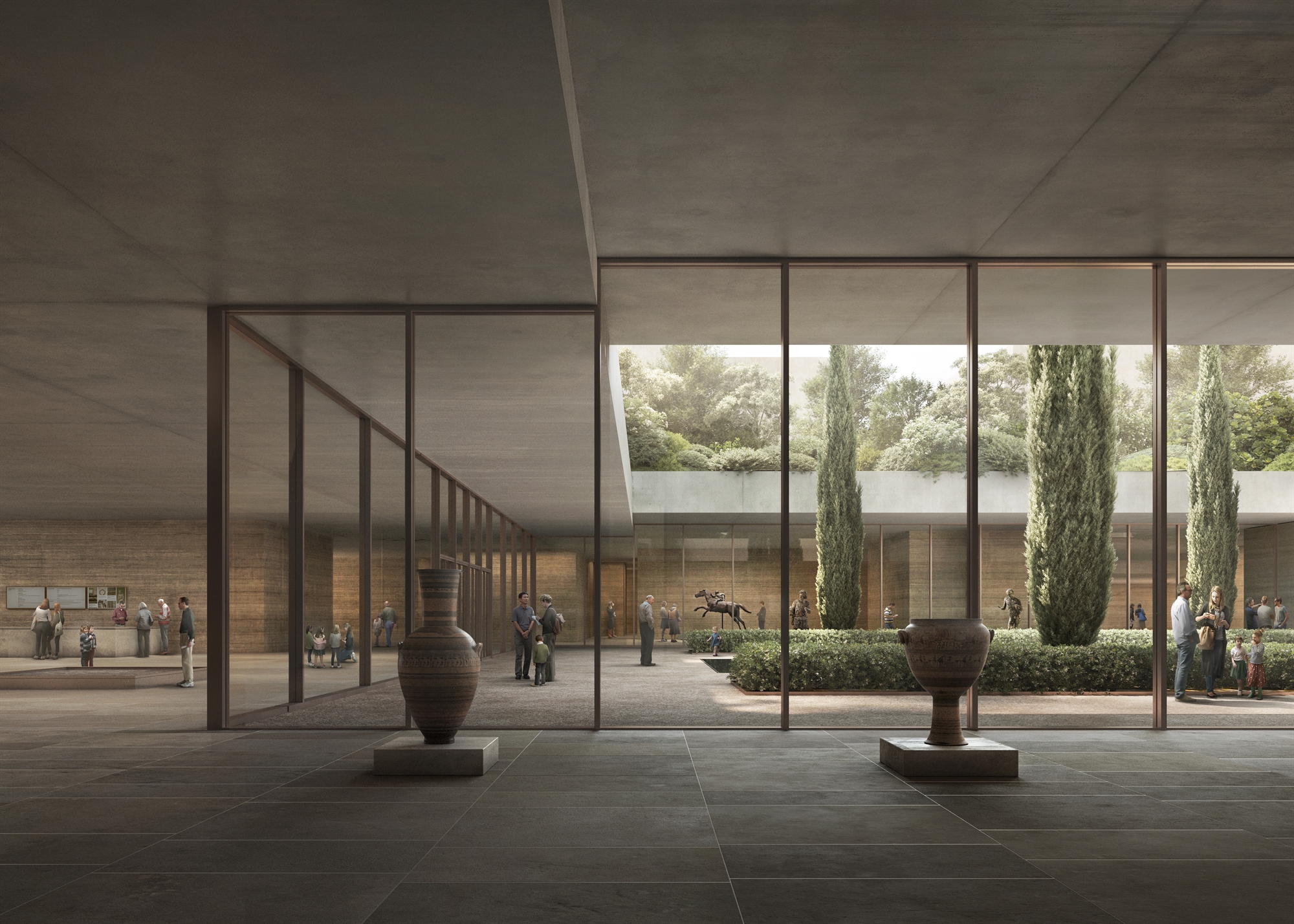
Selected from among ten proposals from internationally awarded architectural firms, it was the subject of great expectations and discussions, but in the end, the architectural project for the modernization and expansion of the new National Archaeological Museum it was presented yesterday afternoon in its entirety in the Altar Hall of the museum by the architectural offices. David Chipperfield Architects And Alexandros N. Tombazis S.A.in the presence of the prime minister Kyriakou Mitsotakis.
As David Chipperfield himself said, during the presentation of the plans, the international evaluation commission from the very beginning set itself a double goal: on the one hand, to relieve the museum’s collections, and on the other hand, “to create stronger relationships.” between museum and city. The challenge, he continued, was “to build in front of a 19th-century building without destroying it.” Stavros Giftopoulos from the Topazi office provided an orientation tour of the premises and mentioned the ground connection of the museum to the historic Acropolis. The prime minister spoke of “the opportunity to revive the whole area” and noted that the intention of the government is that all research be funded by private donations, and the construction of the museum and the surrounding area – by national and European funds.

garden with statues
In particular, the museum’s architectural plan draws its original inspiration from the existing neoclassical building by Ludwig Lange and Ernst Schiller and makes the central building the starting point of the design, framing it with a garden reminiscent of 19th century parks.
The “base” of the central building will extend to Patision Street, strengthening the museum’s connection with the city. The extension will be located above street level and will include two underground exhibition spaces (about 20,000 m2) that will house permanent and temporary exhibitions, as well as the main functions of the museum: ticket office, restaurant, shop and auditorium. Entering from the main entrance to the Patision, visitors will see part of the exhibitions, parts of which will be surrounded by compacted earth walls, and passers-by will also have visual contact with the new exhibition areas, which will use natural light. The all-round accessible and elevated garden, which will be designed on the annex of the landscape architecture bureau Wirtz International, will be distanced from the bustle of the city and will include platforms, gravel paths, grassy areas, as well as pine bushes. and bushes. In the center of the complex, the courtyard will become a meeting place for museum visitors and citizens.

“In my opinion, the purpose of the extension is not to compete with the existing building, but to improve it, both the same and the presentation of the collections,” David Chipperfield told reporters earlier Wednesday morning, giving details project. “One question,” the British architect explained, “was how the extension would stand in front of the original building, without confusing it with its history and importance, while at the same time having a status of its own.” The question of visibility, added Alexander Schwartz, partner of David Chipperfield, “is how the museum shines again as an important landmark of the city.”
The entrance to the museum has been moved to the patio, the exhibits are visible to passers-by, and the patio becomes a meeting point.
Use of clay
Working on museum projects in more than 25 locations around the world, Chipperfield and his colleagues follow modern standards of quality, sustainability and sustainability (strategies that will be applied at the National Archaeological Museum, for example, through the extensive use of clay, water and local building materials ), and their experience in the field of culture allows them to also prepare a plan for the presentation of archaeological collections. “The new wing should not be loaded with hundreds of exhibits, but should emphasize spatial and scenographic features,” said David Chipperfield. “Museums should not definitively regulate the nature of their collections,” he continued, “but should be able to constantly change them. It’s nice to expect different things from the museum. We think that where the original building has consecutive repeating rooms, the new wing will be a more dynamic and more permeable space.”

The question for all museums, whether archaeological or contemporary art, is how to make their content more relevant. “This is an opportunity to present the materials of the National Archaeological Museum in a new way,” the architect said, adding that the role of museums has gone beyond purely scientific and academic, closer to entertainment. “The word ‘entertainment’ has a negative connotation,” he added, “but our idea is that a museum, in addition to a collection of exhibits, is also a social space. And as tourism grows, one question is how a museum, especially one that houses national heritage collections, will balance its appeal to tourists as well as citizens.”
With particular reference to the relationship of the museum garden with visitors and citizens, landscape architect Peter Wirtz noted that the new “green” space will not only give the visitor the opportunity to relax after intellectual concentration, but will also be able to imagine a student from a nearby university who will use it during break.
Schedule
According to David Chipperfield, the extent to which the old building will be renovated, whether it will be temporarily closed for work, is still being discussed. When asked about the timing of the completion of the project and its budget, the architect was restrained in his statements. Especially for the budget, he noted that there is an initial order of economic size, which, however, also depends on political factors, and will also play the role of the “client” in terms of environmental interventions. The start of work is planned after the elections, namely in the summer. “There are three types of schedules: political, financial and practical,” said David Chipperfield, and continued: “They all need to be coordinated.”
A law was also published yesterday making the National Archaeological Museum and four other major institutions NPDD, prompting an outcry from archaeologists’ unions and employees of the Ministry of Culture during an afternoon presentation.

POINT OF VIEW
Breaking the blurry lines of horizons*
Andreas Kurkulas
The procedures for selecting architects for projects of great symbolic value vary. There is no royal road that guarantees the result, and each time a special assessment of the complexity and severity of each issue is needed.
In this particular case, the realization of the scope of the project, which goes beyond the borders of Greece, which relates to the museum of museums of Western culture, led to the choice of the process with an invitation to internationally awarded architectural offices. for their work and, in particular, international awards in contemporary museums. The choice was made on the basis not of national identity, but of international differences and certified international experience in the complex field of museum architecture. The presence of Greek architectural firms, in collaboration with internationally prestigious modern offices with a significant imprint on what exactly a museum means in today’s environment, can only offer an experience in Greek architecture. This osmosis ensures a high level of competition and expectation for a museum that will take an important place on the international map of museums.
The existence of the Internet and the pictorial explosion in relation to the material space of the museum, the ecological dimension that occupies the modern era with intensity, the relationship of the city to the museum, as well as the individual parameters of the choreography of movements and the priority of exhibits, the manipulation of natural light and the relationship of subject and background have been at the center from the very beginning jury attention. The unanimous choice of David Chipperfield Architects and Tombazis and Associates lends particular weight to the result. This is not a panacea for all types of competition, so we must strive for multifaceted processes depending on the nature of each issue.
The presence in our country of important works of foreign architects (Cultural Center of the Stavros Niarchos Foundation Renzo Piano, Acropolis Museum of Bernard Zumi) should not be perceived with fear. On the contrary, they are projects that raise the bar and create hope for the future of Greek architecture.
We must, if we want to increase the role of Greek architects, duck down and study the production processes of architectural work. Countries such as Spain and Portugal, by adopting different selection procedures, have been able to elevate local architects to the level of open international competition, which has greatly contributed to their significant presence on the international architectural scene.
I firmly believe that the selection of the proposal to expand the National Archaeological Museum will make a decisive contribution to the renewal of a key point for the city center and will become a pole of attraction for the wider region, as well as an ambassador of Greek culture. on the international level.
* “Letter to the poet Caesar Emmanuel” by N. Kavadias.
Mr. Andreas Kurkulas – Architect, NTUA Professor Emeritus, President of the International Evaluation Committee for the expansion of the National Archaeological Museum.
Source: Kathimerini
Ashley Bailey is a talented author and journalist known for her writing on trending topics. Currently working at 247 news reel, she brings readers fresh perspectives on current issues. With her well-researched and thought-provoking articles, she captures the zeitgeist and stays ahead of the latest trends. Ashley’s writing is a must-read for anyone interested in staying up-to-date with the latest developments.